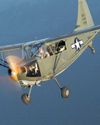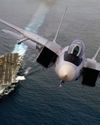Poging GOUD - Vrij
Out For A Sunday Ride
Flight Journal
|December 2016
Civilian Pilots Caught in History’s Path.

Six civilian aircraft were airborne during the Pearl Harbor attack. Three were students with their instructrs, and three were rented by sightseeing pilots and passengers. All but one came under attack by Japanese aircraft. Two planes were shot down, and those three airmen are still missing.
In Hawaii, the first step in the U.S. Government’s 1938 Civilian Pilot Training Program (CPTP) was the ground school held at the University of Hawaii. Schooling included navigation, aerodynamics, and meteorology. Then came flight training at John Rodgers Field (now Honolulu International Airport). CPTP became a mecca for many aspiring pilots due to government funding. Aircraft owners began giving lessons, and flying clubs were formed.
Three flying service operators—Andrew Flying Service, Gambo Flying Service, and K-T Flying Service—were sales representatives stocked with Interstate Cadets, Aeroncas, and Piper Cubs, respectively. Logically, new students were encouraged to get instruction in the aircraft that they might purchase. For instance, Olin Andrew sold the Underground Flying Club an Interstate Cadet. Marguerite Gambo obtained an Aeronca for the Honolulu Junior Chamber of Commerce, whose Hui Lele Flying Club was a favorite, with some 27 members. On the “Big Island” of Hawaii, the Hilo Flying Club purchased a Piper Cub from Robert Tyce, co-owner of K-T.
The Three Students
James Duncan, 24, a mechanic from San Francisco, California; Ernest E. Suomala, 31, a sheetmetal pattern maker from Athol, Massachusetts; and Raymond J. Oderwald, 28, an iron worker from New York City, went to Hawaii as contract workers. They were the student pilots airborne during the Pearl Harbor attack.
Dit verhaal komt uit de December 2016-editie van Flight Journal.
Abonneer u op Magzter GOLD voor toegang tot duizenden zorgvuldig samengestelde premiumverhalen en meer dan 9000 tijdschriften en kranten.
Bent u al abonnee? Aanmelden
MEER VERHALEN VAN Flight Journal

Flight Journal
ELLIPTICAL ELEGANCE
Flying and evaluating the Seafire Mark III
4 mins
November - December 2025

Flight Journal
IRON DOG
Fighting the Pacific and the P-39 at the same time
14 mins
November - December 2025

Flight Journal
Fighter Pilots: A Warrior Clan
TAKE A HARD LOOK at the two young men in these photos. Do they look as if they were bent on killing one another? On the left we have a young, unknown enlisted Japanese pilot standing in front of a Nakajima Ki-27 \"Nate,\" one of Japan's earliest monoplanes that led to the much vaunted Zero.
3 mins
November - December 2025

Flight Journal
KEN WALSH THE FIRST CORSAIR ACE
Medal of Honor pilot's combat adventures
12 mins
November - December 2025

Flight Journal
Big Chief's Little Chief
Thunderbolt action with the Wolf Pack
11 mins
November - December 2025

Flight Journal
ENEMY PILOTS SPEAK Voices from the other side
All too often American students of air warfare forget that enemy aircraftwhether Messerschmitts or MiGs-were flown by human beings with the same motivations and traits as Allied airmen. More often than not, the only difference between friend and foe was the paint on the airplane and where they landed. Therefore, we've assembled a variety of accounts from WW II Axis fighter pilots, men who were more than simply targets.
11 mins
November - December 2025

Flight Journal
FLYING THE FW 190
A legend gets checked out in the Butcher Bird
15 mins
November - December 2025

Flight Journal
DOUBLE-THEATER ACE
The fearless missions of legendary fighter pilot Col. John D. Landers
12 mins
November - December 2025

Flight Journal
WARBUG IN THE PACIFIC
Surviving combat in a Stinson OY-1/L-5
10 mins
September - October 2025

Flight Journal
WINGS OF THE FLEET
Celebrating the U.S. Navy's 250-year legacy
9 mins
September - October 2025
Translate
Change font size

